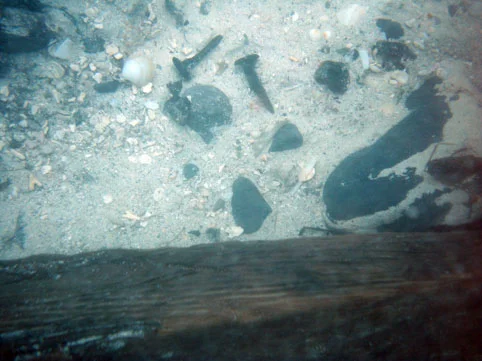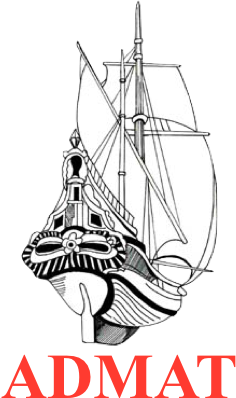
The Team gets ready for the first dive of the day

Tanks for the first dive

The base of the lead box which was found just outside the grid area in the stern of the ship. The box was held into position by some iron ballast bars

A close up once the sand inside the box had been removed

Lead sheeting

Another piece of lead sheeting is partially uncovered

The same piece is fully uncovered showing that the lead strip was fastened to the hull with the same copper alloy bronze nails which were used for the copper sheeting

One of a number of copper alloy bands which were crimped with a lead seal

Copper bands and a copper alloy nail

Another piece of lead sheeting with nail holes

Copper alloy bronze nails next to a long piece of timber which was in excellent condition

A small broken piece of stoneware possible from a stoneware bottle

A concreted round disk on a centre spindle, possibly a part of the bilge pump

Bryan Thomas working on the artefacts

The inside of the lead box after the sand has been cleaned off

The lid which was found separately fits the box

The lid and the box. Interestingly the lid was concreted whereas the box was not

The underside of the lid next to the box

The underside of the box. Unfortunately we could not see any makers marks or any inscription

A number of copper bands were found, some with varying degrees with concretion. All of the bands were in a loop with a seal fixing the two ends

Another copper band. It is unknown what these would have been strapping

One with a break in it. It did not break at the seal which is in the middle

One of the lead patches. Note one side has been ripped off the other still shows the square nail holes. Interesting to see that the lead is concreted

A broken piece of timber with knife marks, possibly from the ships galley or from a mess table

Archaeologist Trenton Bradshaw and Bryan Thomas tagging the artefacts prior to placing them in one of the conservation tanks

Florence Prudhomme working on artefacts


























